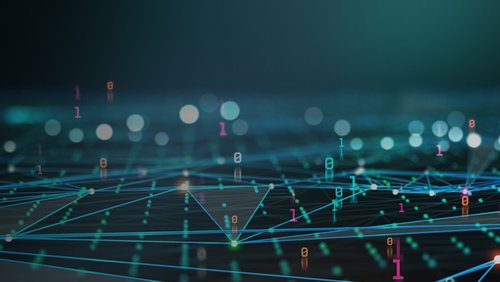10 Jul 2025
With 2025 at the halfway mark, artificial intelligence has shifted from novelty to necessity across New Zealand engineering. This June edition gathers the month’s key local wins, global breakthroughs and hands-on tools, giving you clear context and actionable insights to put straight into practice.
AI New Zealand
Engineering New Zealand webinar series
- AI Panel Q&A webinar –- Catch the recording of our recent session where our experts discussed what engineers risk losing as AI takes on more design, analysis and troubleshooting, whether future roles will be reshaped or removed, and how productivity can rise without eroding professional purpose.
- Modelling NZ with AI & Digital Twins –- recording coming soon. If you missed the July 2nd webinar, we’ will share the link in next month’s newsletter.
- Next live AI Panel Q&A – our upcoming session is being scheduled and will explore how engineering education can evolve to integrate powerful AI tools while still fostering genuine understanding and problemsolving skills. Watch out for registration details in our Learning and Events newsletter.
Have a burning AI question? Email it to ai@engineeringnz.org and we will put it to the panel.
Engineering and AI LinkedIn Group
Our LinkedIn Group is now live, and aims to connect engineers and technical professionals who are keen to share ideas, challenges, and practical insights. Whether you’re navigating complex projects, developing technical guidance, or exploring emerging tools and technologies, this will be a space for open, constructive conversation. Join up here.
AI New Zealand trailblazers
- Agri-tech reaches unicorn status – a Wellington “cow-tech” start-up has closed a NZ $100 million round, becoming the country’s latest unicorn and signalling strong investor appetite for AI-enabled sustainability solutions.
- Smart farming platforms on the rise – CropX has extended its agronomic decision-support system across more New Zealand horticulture blocks, giving growers near-real-time soil insights.
- Inside Blue Origin’s latest space trip – TechMates podcast interviews Mark Rocket, the first New Zealander to fly on Blue Origin’s NS32 mission, sharing lessons for aerospace startups and autonomous flight systems.
Updates from the AI Forum New Zealand
- Aotearoa AI Awards 2025 - Aotearoa AI Summit and AI Hackathon Festival 2025 – entries are open for both events; consider showcasing your project or joining a cross-disciplinary hack-team tackling environmental challenges.
- Sector pulse-check – the Architecture, Engineering & Construction (AEC) Working Group wants your views via a short survey.
- Sign up for the “AI Blueprint” lunchtime webinar on July 7th featuring updates from creative, agricultural and AEC sectors.
University of Auckland AI research survey – a Master of Engineering student is studying how artificial intelligence is reshaping tertiary education and the skill expectations of modern engineering workplaces. Spare eight minutes to share your views via his questionnaire.
AI Global
AAIEEC annual showcase – the Australasian Artificial Intelligence in Engineering Education Centre shared classroom case studies that cut assignment marking time by 60 per cent while lifting feedback quality.
Aria Gen 2 mixed-reality headset – teardown reports reveal an upgraded silicon photonics display pipeline that could open new options for on-site holographic design review.
Meta FAIR perception breakthroughs – research drops this month highlight progress from object localisation to 3-D spatial reasoning, edging closer to real-time robotic perception.
Cognitive-load warning – a new paper, Your Brain on ChatGPT, cautions that heavy reliance on assistants can accrue “cognitive debt”; it offers practical guard-rails for professional writers and engineers alike.
AI tools and software advancements
Using AI Right Now – A quick guide by Ethan Mollick on which of the major AI products to use, with picking an AI model being easier than ever.
ChatGPT for Business – brings enterprisegrade security controls and usage analytics to project teams already experimenting with GPT4o.
Miro Diagram Maker – generates system diagrams from plainlanguage prompts—handy for quick HAZOP or controllogic sketches.
Gemini Veo 3 video generator – produces engineering walkthroughs from BIM snapshots, accelerating client signoff.
Model Context Protocol (open standard) – promises easier traceability between design artefacts and AI outputs.
Anthropic “artifacts” – lets you package prompt, model version and output into a single shareable file – —useful for designchange audits.
Give it a go
Prompting Frameworks
Try these structured approaches the next time you brief an AI model:
- RTF framework (Role – Task – Format) – specify the role you want the model to adopt, define the task clearly, and tell it how to format the reply.
Test it: act as a geotechnical engineer and ask the model to produce a onepage hazard report, formatted as a table, for a proposed retaining wall overlooking Wellington harbour. - CREATE framework (Character – Request – Example – Adjustment – Type of output – Extras) – start with the persona, frame the request, give an example, explain how you will adjust, name the output type, and add any extras such as “show reasoning”.
Test it: adopt the character of a senior materials engineer and iteratively refine a welding procedure specification for stainlesssteel pipework, with each draft delivered as structured JSON. - CRAFT framework (Context – Role – Action – Format – Target audience) – anchor the context, assign a role, define the action, specify the output format, and keep the audience in mind.
Test it: have the model act as a project manager and generate a Markdown infographic outlining the construction sequence for an earthquake resilient timber office building, aimed at local council reviewers.







